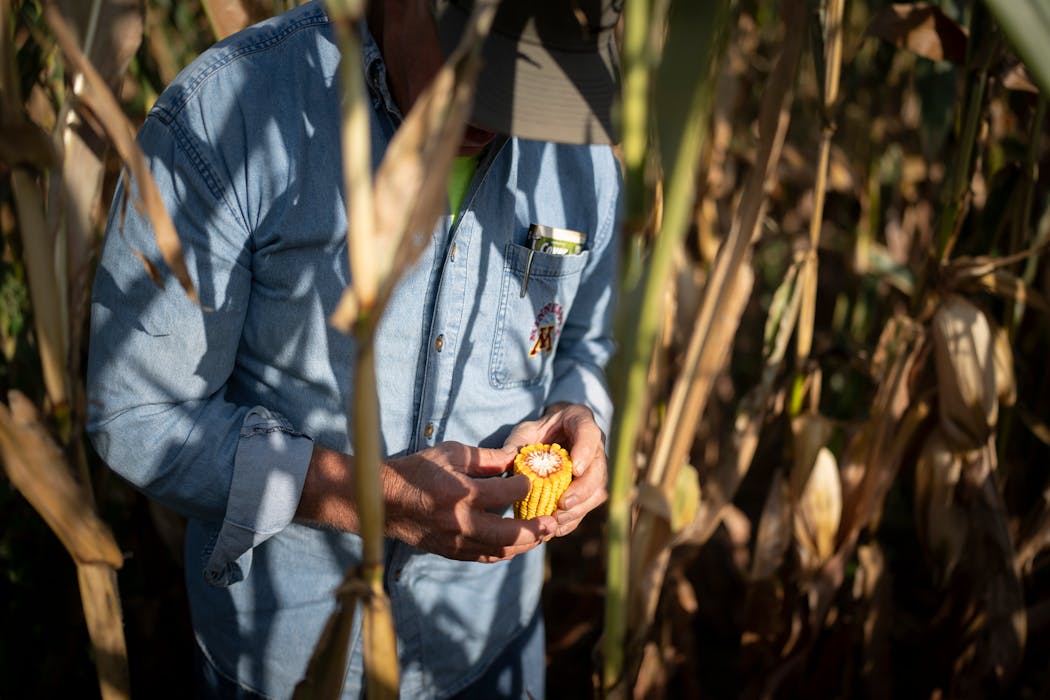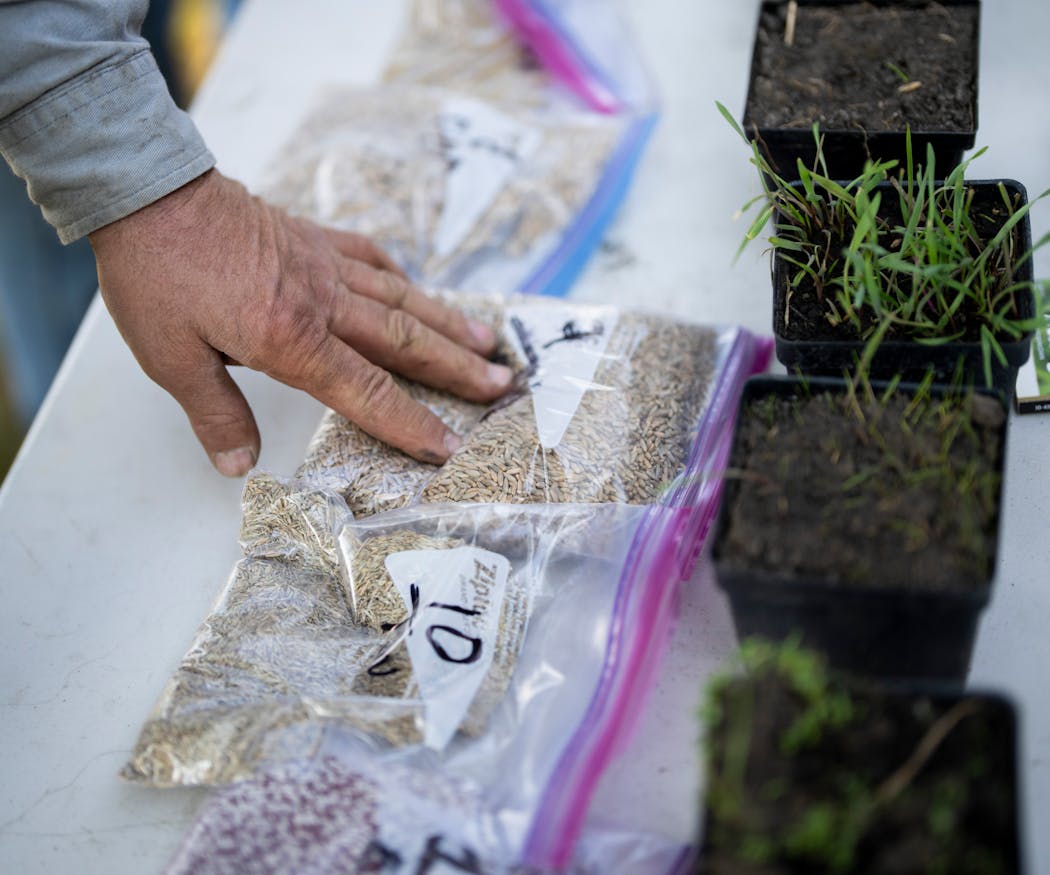EYOTA, MINN. - A broad swath of southern Minnesota, stretching from the Mississippi River to Albert Lea, sits in the national monitor's most extreme ranking for drought, after Thursday's weekly update.
Just to the north of this dry belt sits Dana Allen-Tully's dairy farm and cornfields.
"There'll be some pain out here for sure," Allen-Tully said.
Minnesota crop farmers have historically produced strong yields in adverse weather events — whether too dry or too wet — often by virtue of hearty, genetically engineered seeds.
But the drought of 2023 — the third year in a row of low precipitation — has finally buckled some farmers, who are preparing for drastically lower yields when their combines enter fields later this fall.
Allen-Tully's yields could be as much as 50% lower in some fields, she said, and it's highly variable. On her land, she expects some spots to yield as little as 80 bushels an acre while others could produce up to 210 bushels.
Recent harvest forecasts from the University of Nebraska-Lincoln expect this to be a below-average year for the U.S. corn crop. In the central portions of the nation's corn belt, including Minnesota, yields are predicted to drop 15% below last year's numbers.
Consecutive years of drought have frustrated farmers and ranchers, recreationists and gardeners across the North Star state. The U.S. Drought Monitor reports that more than 25% of Minnesota is in either "extreme" or "exceptional" drought.
Nowhere in the state is this more evident than in and around Rochester.
Last week at a Pine Island farm, farmers gathered to discuss how best to use cover crops to preserve moisture and nitrogen.
At the start of the 2023 growing season, area farmers weren't worried about drought; in fact, they were concerned about too much rain in the first few weeks of May.
"Everybody wanted to start planting after that," said Tom Pyfferoen, host of the field day on soil health. "It did create some problems because we didn't get any rain after that."
But as summer ramped up, rain clouds proved scarce or spotty. Last week, farmers joked that they got excited after they found dew in the fields one morning. Many were concerned about their potential losses.
Mike Brooks farms 1,400 acres near Byron and said he's not losing sleep this year — his crops came in decent, and insurance can cover losses.
"It doesn't work perfectly every year," Brooks said.
But other growers are doing different math.
Larry Lemmerman farms about 400 acres with his son and neighbor near Mazeppa. He's looking into radishes as a cover crop, which can reduce erosion and hold carbon in the ground. On the other hand, radishes can compete for moisture with corn in the early season — a stress point this fall.
"If we don't get a little more rain this fall, going into next year could be interesting," he said.
On Monday, a crop report from the U.S. Department of Agriculture listed 31% of the state's topsoil moisture as "very short," compared with only 7% a year ago.
In Eyota, Allen-Tully compares this moment to the Minnesota drought of 1988. Allen-Tully was in high school when area farmers took their combines through corn plants that didn't have ears of corn. Thanks to advances in seed, most farmers aren't now facing that fate — though their corn may be shorter.
"That means the hybrids and the traits that they have are phenomenally better than what they were," said Allen-Tully.
On her own land, the damage is visible: A field of sweet corn runs adjacent a country road, barely knee-high.
"It laid in dry dirt for probably three to four weeks before it germinated," said Allen-Tully.
And it's almost not worth looking at the forecast. Her family's farm needed rain in July when the corn pollinated, spurting out silks and tassels.
The corn she grows feeds her dairy cows. She sells some to an elevator.
But, at least for this week, there's excitement on the farm west of Rochester. This weekend, country music superstar Luke Bryan will — for the second year in a row — play a show in their alfalfa field for tens of thousands of fans.
They'll be standing in a hay field. And Allen-Tully didn't even need to bale the field for the visitors. The grass is just that short.
Supreme Court rejects Musk appeal over tweets that must be approved by Tesla




